Arch Daily |
- P.E.M Vitré / TETRARC Architectes
- WER House / Spado Architects
- Public Condenser / MUOTO
- Penthouse in Holon / OMY design
- DressingForFun / NTYPE
- The Joyful Church / The Beck Group
- House M / Jaime Ortiz de Zevallos
- Video: This Kinetic Green Wall Displays 'Pixel' Plant Art
- Moneypenny Headquarters / AEW Architects
- Federico Babina's ARCHITALE Brings Fairytales To Life
- House in Trees / Anonymous Architects
- Winning Proposal for Cultural Village Mixes Architectural Archetypes and Nature in Cyprus
- Vizor / Studio11
- The Best Architecture Drawings of 2016
- The Word – National Centre for the Written Word / FaulknerBrowns Architects
- 10 Beautiful Brazilian Apartment Interiors
- Andalucía Rejects Construction of Alvaro Siza's New Gate of Alhambra Project
- Skjern River Pump Stations / Johansen Skovsted Arkitekter
| P.E.M Vitré / TETRARC Architectes Posted: 09 Jan 2017 09:00 PM PST  Courtesy of TETRARC Courtesy of TETRARC
 © Stéphane Chalmeau © Stéphane Chalmeau The Multimodal Interchange project in Vitré comprises the creation of: - A pedestrian footbridge in Vitré Station, spanning the railway  Courtesy of TETRARC Courtesy of TETRARC - An underground car park with 620 spaces, constructed in two phases, and an overhanging pedestrian footbridge, connecting the first footbridge to the "Place de la Victoire" (Victory Square) and thus creating a pedestrian thoroughfare from this square to the Station's north car park  © Stéphane Chalmeau © Stéphane Chalmeau  Courtesy of TETRARC Courtesy of TETRARC - A path connecting the upper part of the Place de la Victoire to rue Pierre Lemaître along the south façade of the car park, against the existing hillside  Section Section  © Stéphane Chalmeau © Stéphane Chalmeau  Section Section - A public space serving the underground car park, an overground car park with 16 space, drop-off spaces serving the Ecole Sainte Marie (St. Mary's School) and the Station via the footbridge, and a road system curving around a plot of land earmarked for the future construction of an office building.  © Stéphane Chalmeau © Stéphane Chalmeau This posting includes an audio/video/photo media file: Download Now |
| Posted: 09 Jan 2017 07:00 PM PST _spado_(2).jpg?1480374625) Courtesy of Spado Architects Courtesy of Spado Architects
_spado_(26).jpg?1480374853) Courtesy of Spado Architects Courtesy of Spado Architects The task was to construct a detached house in the best inner-city location. The plot to be built on rises by about the height of one storey from the northern boundary, where the access road runs, to the south and it opens to the south on to a level area. One major aim of the design was to create an optimum sequence of rooms from the public to the private to provide the highest possible spatial quality in each phase. _spado_(18).jpg?1480374772) Courtesy of Spado Architects Courtesy of Spado Architects The building itself consists of an east-west orientated two-storey base divided by a projecting roof that separates it from the street and protects it to the south and on top of that a north-south running single-storey gable-ended roof construction that minimises the view from the house to the west and forms a protective roof over the terrace. The building fits into its urban environment in that the roof shape and the building line match its surroundings. _spado_(8).jpg?1480374715) Courtesy of Spado Architects Courtesy of Spado Architects The route through the building is intended to create a series of different spatial moods. The hall in the basement was designed as a cave-like interior space in a positive sense. The warm, dark colour scheme accentuates the feeling of "coming home" and it emphasizes the light falling from top to bottom in the area of the single-flight stairway. The wall in the area of the stairs was designed as light with a reflecting surface to further increase the play of light. _spado_(21).jpg?1480374795) Courtesy of Spado Architects Courtesy of Spado Architects Via the stairs you reach the open-plan living area storey that is designed as a flowing space between the inside and the outside but still protected from view. The wall structure of the stairway is extended into the exterior space. This creates a flowing transition between inside and outside. Via another stairway you come to the most intimate and private areas of the house, the bedrooms and the bath area. _spado_(12).jpg?1480374737) Courtesy of Spado Architects Courtesy of Spado Architects  Section Section _spado_(16).jpg?1480374760) Courtesy of Spado Architects Courtesy of Spado Architects For maintenance purposes you can reach the garden level along the eastern boundary. There is storage space for garden tools built into the wall at the garden level. The canopied spaces provide areas protected from the weather and from view. _spado_(25).jpg?1480374841) Courtesy of Spado Architects Courtesy of Spado Architects This posting includes an audio/video/photo media file: Download Now |
| Posted: 09 Jan 2017 06:00 PM PST  © Maxime Delvaux © Maxime Delvaux
 © Maxime Delvaux © Maxime Delvaux From the architect. The project is a public facility, situated on the new campus of Paris-Saclay. The building hosts a mix of activities including indoor and outdoor sports facilities, a restaurant, cafeteria, and various public spaces: a pedestrian square, street terraces, park areas for deliveries, bikes and cars. The building is organised vertically with its different activities superimposed on one another, using the roof as a panoramic playground for football and basketball games. The different areas are linked by an open staircase that allows independant accesses. The building takes the form of an urban shelf, a vertical public space, accessible to all campus visitors, day or night.  © Maxime Delvaux © Maxime Delvaux It is a shared facility, encouraging the encounter of various populations living close to one another, but rarely meeting. The Restaurant, cafeteria and sports activities are made accessible to students, company employees, teachers, and researchers. It aims at creating a meeting point for everyone by mixing activities that are usually separate.  Courtesy of MUOTO Courtesy of MUOTO The building has been conceived as a minimal structure, using rough materials, robust and long lasting techniques. Technology is used minimally to provide a place that will last in time, without need for complicated maintenance.  © Maxime Delvaux © Maxime Delvaux  Section Section  © Maxime Delvaux © Maxime Delvaux In response to the low construction budget, detailing has been kept to a minimum. This economical approach has allowed for the inclusion of a generous public square in the construction price, ensuring a planted pedestrian connection with the existing academic buildings next to the site. The vertical configuration of the building provides a minimal footprint.  © Maxime Delvaux © Maxime Delvaux Product Description. - The main materials used in the building are glass and concrete. The glass façades are characterized by large aluminium sliding doors with triple rails. The concrete beams have been prefabricated and casted in industrial moulds, while concrete columns have been casted on site.  © Maxime Delvaux © Maxime Delvaux This posting includes an audio/video/photo media file: Download Now |
| Penthouse in Holon / OMY design Posted: 09 Jan 2017 02:00 PM PST  © Gideon Levin / 181 architecture photography © Gideon Levin / 181 architecture photography
 © Gideon Levin / 181 architecture photography © Gideon Levin / 181 architecture photography From the architect. When we first saw the grand space we couldn't ignore its height and incredible view. We decided the best way to tackle it would be to focus on a few elements to fit its proportions. We chose a minimalist design concept so that the view remained the main focal point.  © Gideon Levin / 181 architecture photography © Gideon Levin / 181 architecture photography The flooring tiles are large and resemble cement, providing a wide clean surface for furniture on it. Black furniture and lighting fixtures contrast with the white kitchen.  © Gideon Levin / 181 architecture photography © Gideon Levin / 181 architecture photography The living space was kept soft with several textiles: a mint green velvet couch, a vintage private collection carpet, and a custom-made entertainment center and coffee table fit the size and ambiance of the living room.  First Floor Plan First Floor Plan The heart of the living room is an entertainment center made of brass colored metal profile and aluminum net, which gives the space it's industrial and approachable feel.  © Gideon Levin / 181 architecture photography © Gideon Levin / 181 architecture photography The dining room lighting fixtures are made of thin metal wires, making them almost see-through in order to avoid disturbing the views.  © Gideon Levin / 181 architecture photography © Gideon Levin / 181 architecture photography The family of five who lives here loves to entertain; therefore we selected a large dining table suited to the size of the sofa.  Section Section The kitchen is full of storage, creating an organized and minimalistic space. The same goes for the parent's master bedroom features. A walk-in closet constructed from thin metal profiles and industrial glass, elegantly matching the bed-room and serving as its main focal point.  © Gideon Levin / 181 architecture photography © Gideon Levin / 181 architecture photography Product Description: We chose to use a large colored metal framework in order to create an anchor to the bright white open space of the living area. Metal profile is a material that is typically thought to be cold and industrial, but with the right color and accompanying materials, it can transform into something new. Using a metal framework allowed us to build this storage unit on a very large scale. The slick and elegant design compliments the apartment's proportions, keeping a homey feel.  © Gideon Levin / 181 architecture photography © Gideon Levin / 181 architecture photography This posting includes an audio/video/photo media file: Download Now |
| Posted: 09 Jan 2017 12:00 PM PST  © Xiao Yi © Xiao Yi
 Before-After. Image © Joao Lemos Before-After. Image © Joao Lemos Chinese residential buildings dated from 1980s/90s are now facing challenges of being upgraded in order to adapt to new needs and current way of living.  © Joao Lemos © Joao Lemos The site consists of two parts, the front part along the street, and the back part which is an apartment with a separate access from the residential building. In-between there is an open space, forgotten and abandoned by its previous users, hidden behind by a brick wall.  Floor Plan Diagrams Floor Plan Diagrams In the design, this open space is revealed, transformed into three green patios, and a transparent glass pavilion connecting the front and the back, providing the space with a continuous sense of interior/exterior with natural light, enriching, and adding stimulating moments to the overall experience of the space. Extended into the front space, one of the green patios can be seen from the street level. While standing inside of the glass pavilion, street life can also be seen directly or captured by mirror reflection.  © Xiao Yi © Xiao Yi The shop is called DressingForFun. Located in a local Chengdu street, it encourages young people to come back to our street life rather than spending enormous time in shopping malls. A series of fun elements are designed, creating interesting and interactive moments in the space. The space itself is also designed to be flexible, allowing the possibilities for events and exhibitions.  Axonometric Axonometric The entrance revolving door has the shop logo cut out from the front steel panel, with back-lit colorful acrylic plate behind, which can be rotated by a door handle from inside, accordingly the logo will show different color.  Entrance. Image © Joao Lemos Entrance. Image © Joao Lemos The idea of clothes racks comes from unfolding paper clips. Two types of clothes racks are formed by "unfolding": moveable standing ones, and fixed hanging ones with lighting integrated.  Interior Courtyard . Image © Xiao Yi Interior Courtyard . Image © Xiao Yi The changing room is a moveable box with ceiling open. Its location in the shop can be varied according to the program and layout in the space.  Interior . Image © Xiao Yi Interior . Image © Xiao Yi This posting includes an audio/video/photo media file: Download Now |
| The Joyful Church / The Beck Group Posted: 09 Jan 2017 11:00 AM PST  © Seung-Hoon Yum © Seung-Hoon Yum
 © Seung-Hoon Yum © Seung-Hoon Yum Joyful Church chose Beck to create a new facility for the church's growing, vibrant worship and education programs on Sundays and for the church's many social welfare ministries during the week. The church's vision was to have a design that expressed a strong symbolic Christian message, but that also used traditional Korean symbols in a fusion of architecture, faith and culture. The location was a 10 acre site in a new town development area of Pohang. This site had many development challenges included steep, wooded hillsides and strict zoning limitations.  © Seung-Hoon Yum © Seung-Hoon Yum Beck's solution provided a 383,500 SF design that integrated into the landscape with gently flowing lines that wrap around a large central plaza. Spaces included a 2700-seat sanctuary, 800-seat chapel, cafeteria, cafe, library, fitness facilities, children's and youth spaces, welfare ministry facilities and a 350 car underground parking garage. Placement of the buildings into the natural hillsides and careful orientation of the windows allowed ample natural light into the spaces while providing greater energy efficiency. Forms and patterns in the architecture were inspired by traditional Korean crafts and calligraphy, and the use of natural materials and colors further harmonized the entire building into its unique place.  © Seung-Hoon Yum © Seung-Hoon Yum  Courtesy of The Beck Group Courtesy of The Beck Group  © Seung-Hoon Yum © Seung-Hoon Yum  Courtesy of The Beck Group Courtesy of The Beck Group "Beck showed its devoted effort and undivided attention to our church until completion of the building and advised church step by step during church's decision making procedure." Senior Pastor Park, Jin Suk, Joyful Church  © Seung-Hoon Yum © Seung-Hoon Yum Product Description. Brazilian granite was used to create forms and patterns in the architecture which were inspired by traditional Korean crafts and calligraphy, and the use of natural materials and colors further harmonized the entire building into its unique place. This posting includes an audio/video/photo media file: Download Now |
| House M / Jaime Ortiz de Zevallos Posted: 09 Jan 2017 09:00 AM PST  © Juan Solano Ojasi © Juan Solano Ojasi
 © Juan Solano Ojasi © Juan Solano Ojasi From the architect. House M is located on a corner plot overlooking a public park, about a mile away from the coast, in Lima's 1950´s traditional residential neighborhood of San Isidro.  © Juan Solano Ojasi © Juan Solano Ojasi The project has been developed as a basic composition of volumes, planes and materials that define the spaces in response to the views, light, privacy, and a large program.  Floor Plan 1 Floor Plan 1 The four story building is defined by a half sunken garage, office space and service area, all of which raises the living quarters above street level generating a platform for the rest of the building.  © Juan Solano Ojasi © Juan Solano Ojasi The first floor of the house, with the garage roof top garden, living, dining room and the kitchen area sit above the street, overlooking the park through glass walls, while solid concrete walls block the view from the street and generate an entry sequence in to the house.  Section Section The third and fourth levels are defined by a two story wood screen and a horizontal white cantilever volume, with the bedrooms, family room and gym that floats along the tree canopies over the ivy covered concrete wall that surrounds the house.  © Juan Solano Ojasi © Juan Solano Ojasi This posting includes an audio/video/photo media file: Download Now |
| Video: This Kinetic Green Wall Displays 'Pixel' Plant Art Posted: 09 Jan 2017 08:00 AM PST  Courtesy of BAD. Built by Associative Data Courtesy of BAD. Built by Associative Data BAD. Built by Associative Data's Associative Data Research has collaborated with Green Studios to create Kinetic Green Canvas, a prototype Green-Art Installation for building façades. The Canvas consists of individual modules, each of which is a cube made from steel framework, back paneling, L-shaped jambs, secondary structure, waterproofing board, irrigation piping, Green Studios hydroponic skin, and plants. These layered components are assembled on four sides of the cube module, with a motor and water pipe attachment that circulates water throughout. Thus, hydroponic plants in varying shades are grown on each face, and when put together, modules can create changeable "pixel" art. News via BAD. Built by Associative Data. This posting includes an audio/video/photo media file: Download Now |
| Moneypenny Headquarters / AEW Architects Posted: 09 Jan 2017 07:00 AM PST .jpg?1475112898) Courtesy of Moneypenny Courtesy of Moneypenny
.jpg?1475112887) Courtesy of Moneypenny Courtesy of Moneypenny From the architect. AEW Architects has completed a £15m, 91,000sq.ft headquarters for Moneypenny, the UK's leading telephone answering specialist. The offices in Wrexham have been said to rival the offices of Google and Apple, and boast a tree house meeting room, nature trails, vegetable gardens and even its own pub. .jpg?1475112842) © Pochin's Ltd © Pochin's Ltd The staff are at the heart of Moneypenny's business and the brief from the client reflected the importance of its team and the desire to create an interesting, inspiring working environment for them, bringing everyone together from several different offices.  Plan Plan The office was designed as two three storey wings flanking a dramatic, 17m high central atrium, known affectionately as 'the middle', which is the hub of the building. One of the challenges was to ensure that the staff, no matter which floor they were on, felt connected to the 'middle'. This was achieved through the use of large picture windows looking directly into it from the offices and through the placement of bridge links crossing at high level. The atrium includes a treehouse meeting room, indoor terrace and stadium seating. .jpg?1475112910) © Pochin's Ltd © Pochin's Ltd Set within a 10 acre site in a semi rural location on the edge of the Wrexham town centre, the office building was designed in response to the surrounding environment to provide a strong relationship between interior and exterior and includes a nature trail for staff through the extensive grounds with landscape features including a meadow, woodland, an orchard and wetland. .jpg?1475113084) Courtesy of Moneypenny Courtesy of Moneypenny Phil Hepworth, Associate at AEW Architects said "This really has been a dream commission for AEW Architects and a real honour to work with such an exciting, forward thinking company such as Moneypenny. The opportunity to create a bespoke office of this magnitude on such a beautiful site where the brief is to 'ignore the norm and create a space that inspires' is rare. We really hope that the design helps the company continue to excel and inspires the staff to enjoy working there." .jpg?1475112667) Courtesy of Moneypenny Courtesy of Moneypenny Ed Reeves, co-founder and director of Moneypenny believes the building represents the future of office design. He said:"What we believe is simple - the happier our staff, the happier our clients. So when we made the decision to build a new office, we asked ourselves: how we can make sure that our receptionists are the happiest in the UK? The answer was easy - ask them. So that's what we did. AEW Architects were the perfect partners to help make their vision become a reality. They took our thoughts, suggestions and ideas and created our dream home. What's even more remarkable is that they have delivered a world-class and visually stunning commercial development for the same budget we'd been quoted for a standard brick 'box' office"  Axonometric Axonometric The main contractor was Pochin's Ltd, with Hatrick Property as Development Director, Avid Property Consultants as Project Managers, Cundall as M&E Consultants and Structural Engineers, CW Studio as Landscape Architect and Todd and Ledson as Quantity Surveyor. .jpg?1475112795) © Aliva UK © Aliva UK This posting includes an audio/video/photo media file: Download Now |
| Federico Babina's ARCHITALE Brings Fairytales To Life Posted: 09 Jan 2017 06:00 AM PST
Imaginative Italian illustrator and architect Federico Babina has unveiled his latest series, ARCHITALE, "a tribute to the fairytale universe where the architectures are reinvented to accommodate the protagonists of the story." Through his illustrations, Babina imagines 17 structures that dance between reality and fantasy, with each architectural detail revealing information about the characters and story of the respective fairytale.
See the entire set of ARCHITALE illustrations, including designs for Pinocchio, Snow White and the Seven Dwarves, Peter Pan, Aladdin, and Mary Poppins, after the break.  © Federico Babina © Federico Babina  © Federico Babina © Federico Babina  © Federico Babina © Federico Babina  © Federico Babina © Federico Babina  © Federico Babina © Federico Babina  © Federico Babina © Federico Babina  © Federico Babina © Federico Babina  © Federico Babina © Federico Babina  © Federico Babina © Federico Babina  © Federico Babina © Federico Babina  © Federico Babina © Federico Babina  © Federico Babina © Federico Babina  © Federico Babina © Federico Babina  © Federico Babina © Federico Babina  © Federico Babina © Federico Babina  © Federico Babina © Federico Babina  © Federico Babina © Federico Babina  © Federico Babina © Federico Babina News via Federico Babina. This posting includes an audio/video/photo media file: Download Now |
| House in Trees / Anonymous Architects Posted: 09 Jan 2017 05:00 AM PST .jpg?1479936397) © Steve King © Steve King
.jpg?1479936171) © Michael Wells © Michael Wells The site is characterized by its remote feeling and mature trees; this despite being surrounded by dense urban development. It is an unusual paradox to have such a natural setting that occurs in the middle of Los Angeles – a city known for its endless sprawl and crawling traffic. .jpg?1479936223) © Steve King © Steve King The goal was to preserve the natural features where practical – even if this meant having a tree grow through the house. The steep hillside allows the house to cantilever as a design solution to minimize foundations. This act of cantilevering also preserves as much native yard space as possible for planting. .jpg?1479936304) © Steve King © Steve King  Floor Plan Floor Plan .jpg?1479936386) © Michael Wells © Michael Wells To maintain privacy, the house is located close to the center of the lot to create a buffer between it – and other adjoining conditions such as a public street and other houses. .jpg?1479936543) © Michael Wells © Michael Wells The house is conceived as two separate units under one roof. The main part of the house is two bedrooms and is designed for a family of four. The other component – separated by an outdoor breezeway – is self-contained with one bedroom, a living area, a bathroom, and a kitchen. This secondary area is used daily as an office and entertainment area, but can easily be closed off from the main space and used by visiting friends or family. .jpg?1479936125) © Michael Wells © Michael Wells This posting includes an audio/video/photo media file: Download Now |
| Winning Proposal for Cultural Village Mixes Architectural Archetypes and Nature in Cyprus Posted: 09 Jan 2017 04:00 AM PST  Courtesy of Alkiviadis Pyliotis Courtesy of Alkiviadis Pyliotis Alkiviadis Pyliotil and Evangelos Fokialis have won Second Prize in the European architectural competition for the new Cultural Village of Lemba, in Paphos, Cyprus, which called for spaces dedicated to the production of ideas and art to support the expansion of the village. Entitled Inherent Simplicity, the proposal centers on spatial arrangements of fundamental architectural archetypes, as well as "the importance of outdoor life, social osmosis, and the vital relationship with nature to the condition necessary to artistic creation."  Courtesy of Alkiviadis Pyliotis Courtesy of Alkiviadis Pyliotis  Courtesy of Alkiviadis Pyliotis Courtesy of Alkiviadis Pyliotis  Courtesy of Alkiviadis Pyliotis Courtesy of Alkiviadis Pyliotis As requested by the competition brief, the project utilizes both old and new buildings, creating a spatial dialogue.
 Courtesy of Alkiviadis Pyliotis Courtesy of Alkiviadis Pyliotis  Courtesy of Alkiviadis Pyliotis Courtesy of Alkiviadis Pyliotis  Courtesy of Alkiviadis Pyliotis Courtesy of Alkiviadis Pyliotis Generally, the proposal consists of three pieces—a square, a school, and a guesthouse—all of which will be used by the Cyprus College of Art. The main school building consists of three parts: three shear walls of rammed earth, two panels, and two rectangular prisms.  Courtesy of Alkiviadis Pyliotis Courtesy of Alkiviadis Pyliotis Learn more about the project here.
News via Alkiviadis Pyliotis. This posting includes an audio/video/photo media file: Download Now |
| Posted: 09 Jan 2017 03:00 AM PST  © Dmitry Tsyrencshikov © Dmitry Tsyrencshikov
 © Dmitry Tsyrencshikov © Dmitry Tsyrencshikov The project was developed for the working floor of Vizor Interactive company – one of the leading international developers of multiplayer games for browser, social networks and mobile platforms with its headquarters in Minsk. The interior was created in collaboration with the guys from Facultative.Works (St. Petersburg), who were responsible for space graphic design and separate interior details.  Axonometric Axonometric The interior concept is defined by industrial yet light, cheerful and neatly balanced stylistics keeping up with modern design and architecture trends. It is a place where you will find the openness of loft and minimalism, the nuance application of color and light, as well as graphic compositions inspired by avant-garde design.  © Dmitry Tsyrencshikov © Dmitry Tsyrencshikov Our principal objective was to transform a standard and mundane layout of a typical business center into a creative space for an ingenious development team, a space characterized by comfort and inviting to productive work. Despite using a number of certain patterns, the space features quite a diversity and intrigue with each of the premises showing its own individuality. All this creates vivacious atmosphere and has a favorable effect on the team's work.  © Dmitry Tsyrencshikov © Dmitry Tsyrencshikov The interior was structured around the central rectangular block housing the kitchen, WC facilities and the server room, which became the main graphic and color focus of the work space. The block is paneled with plywood and tinted MDF of two colors. The ceiling is open and painted white, thus demonstrating the elegance of structures and communication lines. The floor on the entire level as well as the ceiling is made in one technique – it is a self-leveling floor with marble chips filling, which forms an unusual graphic texture. As a result the top and the bottom shape a stylistic entity of space.  © Dmitry Tsyrencshikov © Dmitry Tsyrencshikov The rest can be described as a synthesis of various materials. The prevailing color of walls and partitions is white. Some of the reinforced concrete structures are left untouched. The meeting room is arranged inside a glass box. The game room is fitted with acoustic panels for sound absorption. The work premises are airy, open and well insolated. The ladies' and men's rooms differ only in the interior lighting color. The sink cabinets have been designed specifically for this project. Plywood panels and green plants add comfort and coziness to the interior, whereas colorful panels, neon installations and accent details attenuate sternness and austerity. The colors and bright but complex.  Plan Plan We are trying to create something truly valuable for those who appreciate the concept of aesthetics and are ready to experiment.  © Dmitry Tsyrencshikov © Dmitry Tsyrencshikov This posting includes an audio/video/photo media file: Download Now |
| The Best Architecture Drawings of 2016 Posted: 09 Jan 2017 01:30 AM PST  Courtesy of RIGI Design Courtesy of RIGI Design Designing and building a project is a challenge in itself. However, once the project is complete there are also challenges in expressing the project so that it can be understood by a new audience. This is especially true in digital media, where online readers don't necessarily spend the same time reading an article as in print media. This way, drawings and all visual representation and it's new forms -such as the animated Gifs- play an important role in the project's understanding At ArchDaily we push ourselves as editors, as well as the architects in our network, to get the best out of the projects we receive and share with the world so that we can deliver knowledge and inspiration to millions of people. The drawings we chose are not only visually entertaining but they serve as a way of educating and learning on particular issues where architectural representation is fundamental. Regardless if they are digital or hand-drawn, all the architectural drawings we have selected this year have a sensitive expression, whether it be artistic, technical or conceptual, they all aim to express and explain the project using simplicity, detail, textures, 3D and color as main tools. This year we want to highlight a selection of 90 drawings arranged under eight categories: Architectural Drawings, Axonometrics, Context, Diagrams, Sketches, Animated Gifs, Details and Other Techniques. Architectural Drawings © OMA © OMA  Courtesy of People's Architecture Office Courtesy of People's Architecture Office  Courtesy of MOATTI-RIVIERE Courtesy of MOATTI-RIVIERE  Courtesy of Ambrosi I Etchegaray Courtesy of Ambrosi I Etchegaray  Courtesy of ARCHSTUDIO Courtesy of ARCHSTUDIO  Courtesy of AD+studio Courtesy of AD+studio  Courtesy of Fernando Menis Courtesy of Fernando Menis  Courtesy of Hiroshi Nakamura & NAP Courtesy of Hiroshi Nakamura & NAP  Courtesy of Valerio Olgiati Courtesy of Valerio Olgiati  Courtesy of Ludwig Schoenle Courtesy of Ludwig Schoenle  Courtesy of MRDA Architects Courtesy of MRDA Architects  Courtesy of Boundaries architects Courtesy of Boundaries architects  Courtesy of Héctor Fernández Elorza + Manuel Fernández Ramírez Courtesy of Héctor Fernández Elorza + Manuel Fernández Ramírez  Courtesy of CURE & PENABAD Courtesy of CURE & PENABAD au.jpg?1481301068) Courtesy of Coop Himmelb(l)au Courtesy of Coop Himmelb(l)au  Courtesy of Fabienne Bulle architecte & associés Courtesy of Fabienne Bulle architecte & associés Axonometric and Isometric Courtesy of Vázquez Consuegra Courtesy of Vázquez Consuegra  Courtesy of Logical Process in Architectural Design Courtesy of Logical Process in Architectural Design  Courtesy of Kazuyuki Takeda Courtesy of Kazuyuki Takeda  Courtesy of República Portátil Courtesy of República Portátil  Courtesy of CarverHaggard Courtesy of CarverHaggard  Courtesy of NUDES Courtesy of NUDES  Courtesy of DATA Courtesy of DATA  Courtesy of NUA Arquitectures Courtesy of NUA Arquitectures  Courtesy of Bajet Giramé Courtesy of Bajet Giramé  Courtesy of Héctor Fernández Elorza + Manuel Fernández Ramírez Courtesy of Héctor Fernández Elorza + Manuel Fernández Ramírez  Courtesy of Yasutaka Yoshimura Architects Courtesy of Yasutaka Yoshimura Architects  Courtesy of West Line Studio Courtesy of West Line Studio Context Drawings Courtesy of ARCHSTUDIO Courtesy of ARCHSTUDIO  Courtesy of Studioninedots Courtesy of Studioninedots  Courtesy of AZC Courtesy of AZC  Courtesy of feld72 Courtesy of feld72  Courtesy of B.L.U.E. Architecture Studio Courtesy of B.L.U.E. Architecture Studio  Courtesy of IAPA Design Consultants Courtesy of IAPA Design Consultants  Courtesy of Fabienne Bulle architecte & associés Courtesy of Fabienne Bulle architecte & associés  Courtesy of Hiroshi Nakamura & NAP Courtesy of Hiroshi Nakamura & NAP Diagrams Courtesy of Wülser Bechtel Architekten Courtesy of Wülser Bechtel Architekten  Courtesy of People's Architecture Office Courtesy of People's Architecture Office  Courtesy of Yushang Zhang Courtesy of Yushang Zhang  Courtesy of SUP Atelier + School of Architecture Tsinghua University Courtesy of SUP Atelier + School of Architecture Tsinghua University  Courtesy of Ludwig Schoenle Courtesy of Ludwig Schoenle  Courtesy of Logical Process in Architectural Design Courtesy of Logical Process in Architectural Design  Courtesy of Studio A dvaita Courtesy of Studio A dvaita  Courtesy of Supermachine Studio Courtesy of Supermachine Studio  Courtesy of NUDES Courtesy of NUDES  Courtesy of ArchSD Courtesy of ArchSD  Courtesy of Supermachine Studio Courtesy of Supermachine Studio  © OMA © OMA  Courtesy of MAT Office Courtesy of MAT Office  Courtesy of Gijs Van Vaerenbergh Courtesy of Gijs Van Vaerenbergh Sketches Courtesy of CEBRA Courtesy of CEBRA  Courtesy of Peter Salter Courtesy of Peter Salter  Courtesy of António Costa Lima Arquitectos Courtesy of António Costa Lima Arquitectos  Courtesy of BCHO Architects Courtesy of BCHO Architects  Courtesy of BCHO Architects Courtesy of BCHO Architects  Courtesy of Héctor Fernández Elorza + Manuel Fernández Ramírez Courtesy of Héctor Fernández Elorza + Manuel Fernández Ramírez  Courtesy of CEBRA Courtesy of CEBRA  Courtesy of Alberto Campo Baeza + Gilberto L. Rodríguez Courtesy of Alberto Campo Baeza + Gilberto L. Rodríguez  Courtesy of ArchSD Courtesy of ArchSD au.jpg?1481295325) Courtesy of Coop Himmelb(l)au Courtesy of Coop Himmelb(l)au  Courtesy of TEN Arquitectos Courtesy of TEN Arquitectos Animated Gifs
Details Courtesy of Atelier Alter Courtesy of Atelier Alter  Courtesy of MESURA Courtesy of MESURA  Courtesy of SUP Atelier + School of Architecture Tsinghua University Courtesy of SUP Atelier + School of Architecture Tsinghua University Other Techniques Courtesy of Nuno Brandão Costa Courtesy of Nuno Brandão Costa  Courtesy of Studio Fuksas Courtesy of Studio Fuksas  Courtesy of CURE & PENABAD Courtesy of CURE & PENABAD  Courtesy of Studio Fuksas Courtesy of Studio Fuksas  Courtesy of Fala Atelier Courtesy of Fala Atelier  Courtesy of Pezo von Ellrichshausen Courtesy of Pezo von Ellrichshausen  Courtesy of Studio A dvaita Courtesy of Studio A dvaita The Best Architecture Drawings of 2015 This posting includes an audio/video/photo media file: Download Now |
| The Word – National Centre for the Written Word / FaulknerBrowns Architects Posted: 09 Jan 2017 01:00 AM PST  © Hufton+Crow © Hufton+Crow
 © Hufton+Crow © Hufton+Crow From the architect. In a modern society in which we all enjoy immediate access to information 24 hours a day, 7 days a week, then what should a library for the 21st century look like and what should it offer to the public? This was the simple question which The Word, National Centre for the Written Word seeks to answer. It was clear to us that to respond to this challenge would require a reinterpretation of the building typology.  © Hufton+Crow © Hufton+Crow The site for The Word is an extremely prominent gateway to the town centre. It provides a strong link between the Ferry Terminal and South Shields town centre and serves to link the riverside character area with the town centre and historically important market place in South Shields.  Site Section Site Section  Building Section Building Section The building concept adopts a simple circular form to reinforce the pedestrian link and views between the Harton Quays Riverside Park and market place. The building's appearance is inspired by the fanning out of the pages of a book, and includes the introduction of two large glass walls providing superb views of the River Tyne and creating a natural place for the building's entrance, responding to the public realm of the market place.  © Hufton+Crow © Hufton+Crow The central atrium forms the entrance gateway into the building, expressed externally as a modern portico with full height glazing, creating a strong and contextual relationship with the market place, The Old Town Hall and St Hilda's Church.  © Hufton+Crow © Hufton+Crow The Word provides a rich array of volumes ranging from the grand social forum in the central atrium to the most private and individually concentrated reader spaces at the perimeter of the building. An array of interactive activities are positioned close to the inner circle of the building providing easy and quick access to these attractions. The Word is not a temple for silence, but a place for sharing knowledge, where the young can learn from the old and the old can learn from the young.  © Hufton+Crow © Hufton+Crow The Word's design is truly transformative in every sense. It not only helps to transform the character of the site and context, but also helps to transform a visitor's perception of what a library can be and how it can form part of a larger cultural venue of regional and national significance. It recognises the crucial importance of people, books, traditional media and interactive technologies, and the dynamic relationship and complex interactions between them.  © Hufton+Crow © Hufton+Crow The human-centric design approach places the individual at the heart of the building and celebrates the opportunity to inform, delight and interact. Libraries are of vital importance - they allow us to engage with stories. This in turn allows us to see the world through someone else's eyes, to see their point of view – enabling us to be more understanding, more tolerant and more human, helping to create a more cohesive and inclusive community and society. The design of The Word empowers this strategy by creating a significant and civilised building which points to the future and underlines the importance of the library within our modern society.  © Hufton+Crow © Hufton+Crow Product Description. - The Word – National Centre for the Written builds upon the long tradition of a circular building form to accommodate a library function. There is a fine architectural tradition of the synonymous relationship such as the Bodleian Library in Oxford or Manchester's Central Library. To achieve the circular building form and to respond to the site's sensitive context a 140mm wide vertical terracotta baguette was selected as the building's main external cladding. Three colour tones of terracotta panels were adopted to respond to the colour of the stone used in the construction of the listed buildings which surround the site. The vertical module enabled the circular form of the building to be achieved without the use of curved panels – this combined with a structurally insulated panel (SIPs) helped to create an elegant and economic envelope solution. This posting includes an audio/video/photo media file: Download Now |
| 10 Beautiful Brazilian Apartment Interiors Posted: 09 Jan 2017 12:00 AM PST
From Oscar Niemeyer's iconic Edifício Copan to Lina Bo Bardi's influential glass house, Brazil has long been notable for its residential architecture. Part of that success has been driven by the strength of Brazilian interiors, as many of the country's designers have an astute understanding of and appreciation for materials. Many designs sensitively fuse both rough, raw elements with luxurious details—an approach that is can be cleverly adjusted to suit a wide variety of clients and budgets. Here we showcase ten projects, published on both ArchDaily and ArchDaily Brasil, that respond to the needs of different clients and different ways of living to provide a cross-section of interior architecture in Brazil. Below are the 10 selected projects. Maria Carolina / Flavia Torres + Pedro Freire + Sub Estúdio  © Tomás Cytrynowicz © Tomás Cytrynowicz Apartamento Jardins / Tavares Duayer Arquitetura  © Bruno Cardi // João Duayer © Bruno Cardi // João Duayer Copan Apartment / Felipe Hess & Renata Pedrosa  © Fran Parente © Fran Parente Apartamento Rua Pirapetinga / Piratininga Arquitetos Associados + JPG.ARQ  © Jomar Bragança © Jomar Bragança  © André Nery © André Nery GN Apartment / Studio Arthur Casas  © Fernando Guerra | FG+SG © Fernando Guerra | FG+SG Riachuelo Apartment / 0E1 Arquitetos  © Marcelo Donadussi © Marcelo Donadussi AM Apartment / SuperLimão Studio  © Maira Acayaba © Maira Acayaba  © Leonardo Finotti © Leonardo Finotti Paulista Apartment / Triptyque  © Roberto Wagner © Roberto Wagner This posting includes an audio/video/photo media file: Download Now |
| Andalucía Rejects Construction of Alvaro Siza's New Gate of Alhambra Project Posted: 08 Jan 2017 10:00 PM PST  New gate, by Alvaro Siza and Juan Domingo Santos. Image © Alvaro Siza Vieira + Juan Domingo Santos; Rendering by LT Studios New gate, by Alvaro Siza and Juan Domingo Santos. Image © Alvaro Siza Vieira + Juan Domingo Santos; Rendering by LT Studios The Regional Government of Andalucía (Spain) has decided not to move forward with plans to build "Puerta Nueva," the project for the new gate of Alhambra. Designed by Álvaro Siza and Juan Domingo Santos, the proposal won an international competition held in 2010. According to the newspaper El País, the decision follows the latest Icomos report, which rejects its construction and suggests it would have a "negative impact on the exceptional universal value of this monument World Heritage." The 1992 Pritzker Prize winner's project sparked a long-running dispute between the Monument Patronage, the Mayor's Office of Granada and cultural institutions of Andalusia for the high concentration of commercial services that would be included in the project. "How is it possible to argue that the project is not integrated and is invasive in the landscape when the jury noted that one of its main virtues was its integration in a place so sensitive and intervened since the twentieth century?" remarked Siza and Santos on the decision of Andalucía, according to El País.  © Alvaro Siza Vieira + Juan Domingo Santos; Rendering by LT Studios © Alvaro Siza Vieira + Juan Domingo Santos; Rendering by LT Studios Reacting to the decision, Siza and Santos asked, "How is it possible to argue that the project is not integrated and is invasive in the landscape when the jury noted that one of its main virtues was its integration in a place so sensitive and intervened since the twentieth century?" according to El País. With a budget of 45 million euros, the 5,700 square meter project offered a transition zone between the arrival area and access for the 2.5 million yearly visitors to the Alhambra. Its program included a lobby, tourist attention areas, cultural information delivery, as well as shops, cafes, and restaurants. Planned submerged parking sought to eliminate the visual impact of visitors' vehicles. The design proposed a series of enclosed spaces, shaded courtyards, and large sunny terraces. In 2014 the project was presented in Berlin at the exhibition "Visions of the Alhambra," where curator António Choupina stated that "the building merges with the landscape, articulating manuscript documents that sketch the old farmland with the elevations of the garden terraces that are in the village Generalife." According to El País, the direction of the Alhambra will focus on "restoration of the whole and restoration of heritage in the Albaicín neighborhood." Álvaro Siza + Juan Domingo Santos Design "New Gate of Alhambra" News via: El País. This posting includes an audio/video/photo media file: Download Now |
| Skjern River Pump Stations / Johansen Skovsted Arkitekter Posted: 08 Jan 2017 09:00 PM PST  © Rasmus Norlander © Rasmus Norlander
 © Rasmus Norlander © Rasmus Norlander From the architect. The project is a conversion of three pump stations originally constructed in the late 1960s in connection with the large land reclamation project where Skjern River was straightened out. A large number of environmental problems were associated with this alignment of the river, leading to the river being restored to its original run in 2002. In this way a vast and rich natural area reappeared with many visitors.  Site Plan Site Plan The original pump stations contained underground water chambers, large halls for the pumps, storage rooms and high voltage rooms. The original pumps in the pump hall were essentially taken out of operation and there has been established a new type of pumps located in the underground water chambers. In this way, the upper part of the building was no longer in use. A framework for the new life of the area has been provided with the rebuilding and extension of the over ground parts of the three pump stations, in the form of exhibition spaces, indoor and outdoor viewpoints to look out over the landscape, rooms for different kinds of events, and accessibility for disabled.  © Rasmus Norlander © Rasmus Norlander  Section Section  © Rasmus Norlander © Rasmus Norlander Generally, the original pump stations are detailed alike but different in size and shape. In the same way the new additions to the three pump stations are both the same and different. The extensions and the new interior building elements are mainly simple wooden constructions and reiterate the dimensions and rhythm of the original pump stations' concrete relief. This creates a direct link between the old structure and the new, while adding a new material and another texture that is pleasing to the touch. With this detail, the cladding and the main structure become one, reducing the complexity of the building, which is reflected in the budget as well as the final expression.  © Rasmus Norlander © Rasmus Norlander  Section Section  © Rasmus Norlander © Rasmus Norlander Myhrwold and Rasmussen engineered the original pump stations to be unsentimental and raw in their materiality, and the vertical relief of the concrete façades reminds us of the surrounding ploughed furrows of the fields, and profiles of the soil that control the run of the river. In the conversion of the three pump stations the aim has been that the individual pump stations would still appear as a united whole, to challenge their massive and heavy character and enhance their figure in the landscape, and to add a human scale and materiality.  © Rasmus Norlander © Rasmus Norlander The project exemplifies how the transformation of "the negative heritage" can fill the purpose of mediating between a repressed past and contemporary life.  © Rasmus Norlander © Rasmus Norlander This posting includes an audio/video/photo media file: Download Now |
| You are subscribed to email updates from ArchDaily. To stop receiving these emails, you may unsubscribe now. | Email delivery powered by Google |
| Google Inc., 1600 Amphitheatre Parkway, Mountain View, CA 94043, United States | |
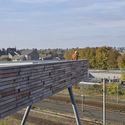


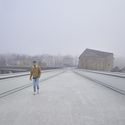
_spado_(8).jpg?1480374715)
_spado_(18).jpg?1480374772)
_spado_(6).jpg?1480374681)
_spado_(26).jpg?1480374853)


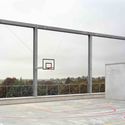
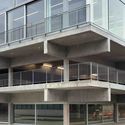









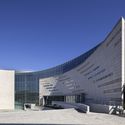

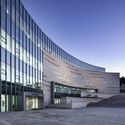























.jpg?1479936223)
.jpg?1479936373)
.jpg?1479936125)
.jpg?1479936543)









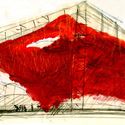







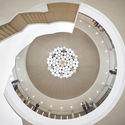

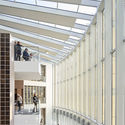
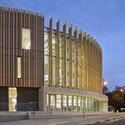









Nema komentara:
Objavi komentar